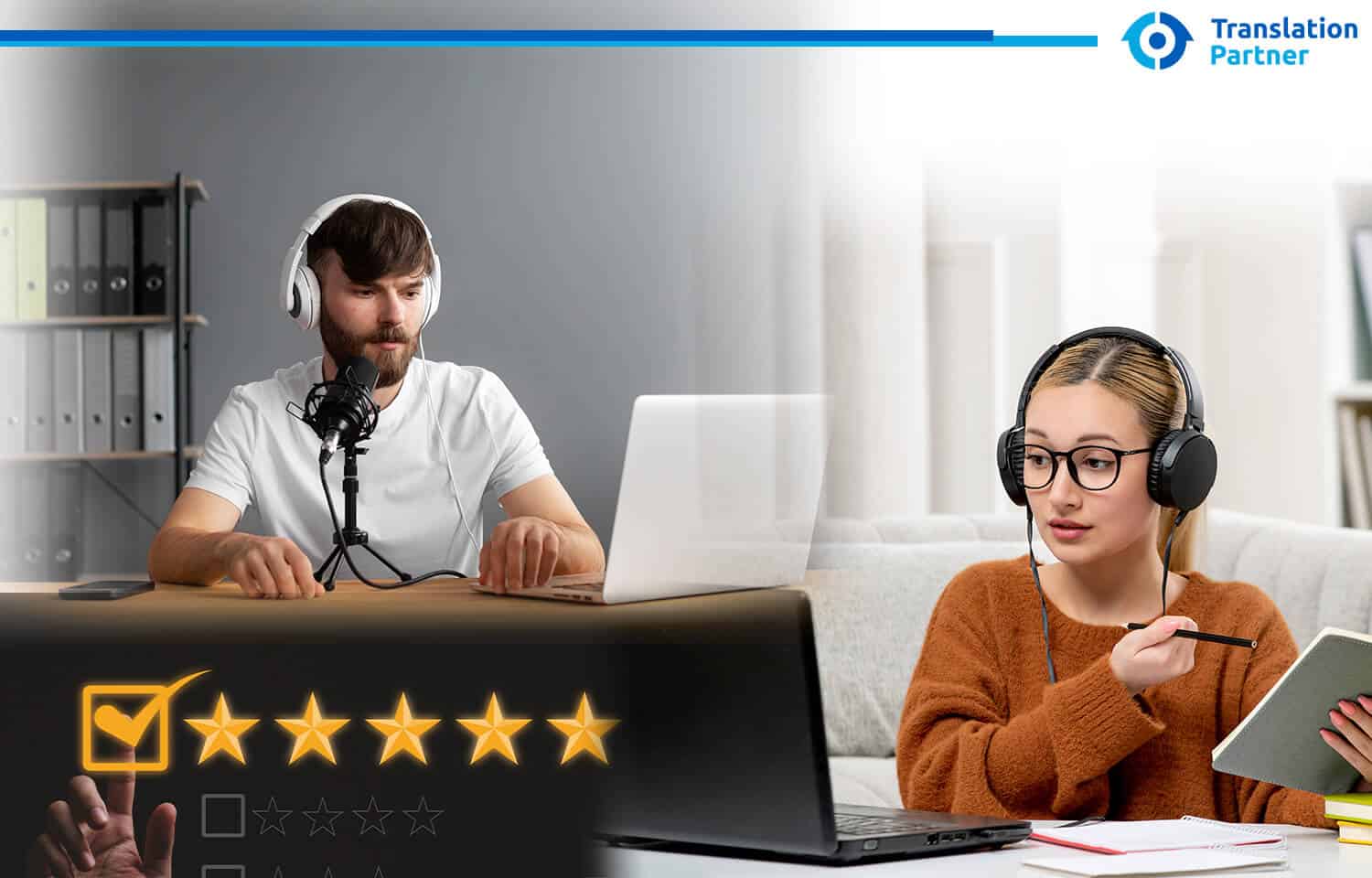Why Is It Important to Have a High-Quality Narration and Voiceover for Your E-learning Courses?

In the digital age, e-learning has become a popular and convenient way for individuals to gain knowledge and skills. With the click of a button, learners can access a wealth of information from the comfort of their own homes or workplaces.
However, with the growing popularity of e-learning, it’s becoming increasingly important to create courses that are not only informative but engaging and memorable.
One way to achieve this is through high-quality voiceover. The power of voice cannot be underestimated, and when it comes to e-learning, it can be the difference between a successful course and a forgettable one.
High-quality voiceover can help learners to understand complex concepts, maintain engagement, and improve retention rates.
But creating effective voiceovers is no easy task. It requires careful planning, attention to detail, and a clear understanding of the target audience.
In this article, we will explore the importance of high-quality narration and voiceover in e-learning courses.
We will discuss the benefits of using voiceovers, provide tips for creating effective voiceovers, and explore the tools and techniques that can help you to create engaging and memorable e-learning courses.
Why is Voiceover Important for E-Learning Courses?
E-learning courses typically rely on pre-recorded audio or video to provide instruction to learners. This makes voiceover a critical component of e-learning courses.
The quality of the narration and voiceover can significantly impact how learners perceive the course and how effectively they can retain information.
Research has shown that the use of narration and voiceover can help learners better understand complex concepts.
In a study published in the Journal of Educational Psychology, researchers found that the use of narration helped learners understand and remember complex scientific concepts better than written text alone.
The impact of a professional voiceover on learners cannot be overstated.
A professional voiceover artist can help learners stay engaged and motivated throughout the course.
The right voiceover can also make the course more enjoyable, which can improve the overall learning experience.
In contrast, a poorly recorded or low-quality voiceover can distract learners and negatively impact their ability to understand and retain information.
In addition to the quality of the voiceover artist, audio quality is also crucial. Poor audio quality can make it difficult for learners to understand the content and detract from the overall learning experience.
Learners may struggle to hear the narration or voiceover clearly, which can lead to frustration and a lack of engagement.
Tips for Creating Effective E-Learning Courses with High-Quality Narration and Voiceover
Creating high-quality narration and voiceover for e-learning courses requires careful planning and execution.
Here are some tips for creating effective e-learning courses with high-quality narration and voiceover:
1. Script Writing:
The first step in creating an effective e-learning course is to write a well-written script.
The script should be easy to follow, concise, and engaging. It should also be written in a way that works well with voiceover.
When writing the script, consider the target audience and the learning objectives of the course.
Use language that is easy to understand and avoid using technical jargon that learners may not be familiar with.
If you’re unsure of how to write a script that works well with voiceover, consider working with a professional scriptwriter.
2. Choosing the Right Voiceover Talent
Choosing the right voiceover artist is crucial for creating an effective e-learning course. \
When selecting a voiceover artist, consider factors such as tone, style, and experience.
You want a voiceover artist who can convey the message of the course clearly and engagingly.
There are several ways to find professional voiceover artists, including online marketplaces such as Fiverr or Upwork, or by working with a professional voiceover agency.
When selecting a voiceover artist, ask for samples of their work and read reviews from previous clients.
3. Recording and Editing Voiceover
Once you’ve selected a voiceover artist, it’s time to record and edit the voiceover.
A professional recording studio is necessary, as you’ll need a quiet space to record the voice.
Recording the voiceover on a smartphone or laptop is never recommended, as the audio quality may not be sufficient.
When recording, ensure that the microphone is positioned correctly and that the voiceover artist speaks clearly and at a consistent volume.
If there are mistakes or errors in the recording, edit the audio to remove them.
4. Integrating Voiceover with Course Content
Once the voiceover is recorded and edited, it’s time to integrate it with the course content. Ensure that the voiceover complements the visuals and text on the screen.
For example, if there is a diagram on the screen, the voiceover should explain the diagram in detail.
To synchronize the voiceover with on-screen text and visuals, use video-editing tools.
You can also use captions or subtitles to make the course more accessible to learners with hearing impairments.
Conclusion
A high-quality voiceover is an essential component of e-learning courses. They can help learners understand complex concepts, maintain engagement, and improve retention rates.
When creating e-learning courses, it’s essential to invest in high-quality narration and voiceover to maximize the effectiveness of the course. To get the best Voiceover services for your courses, contact us at TranslationPartner.
